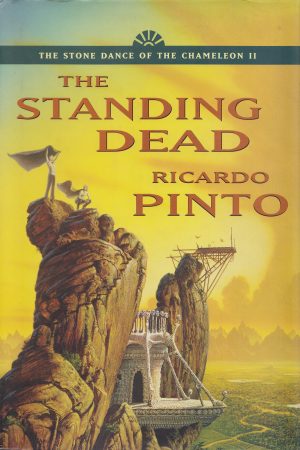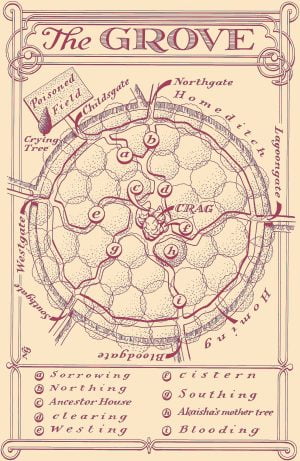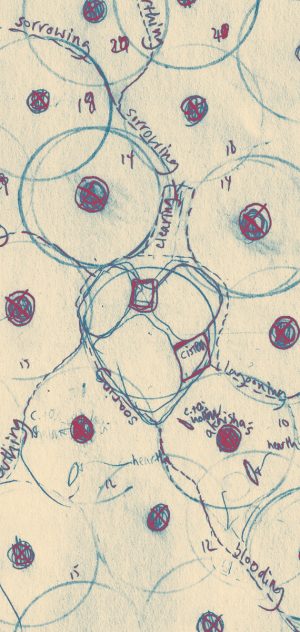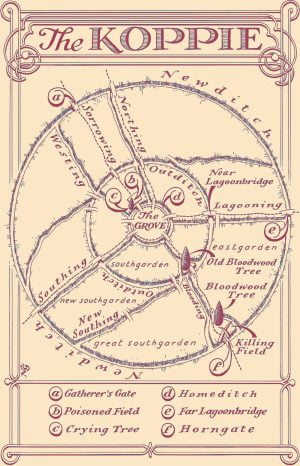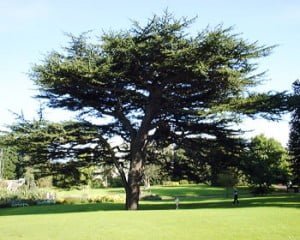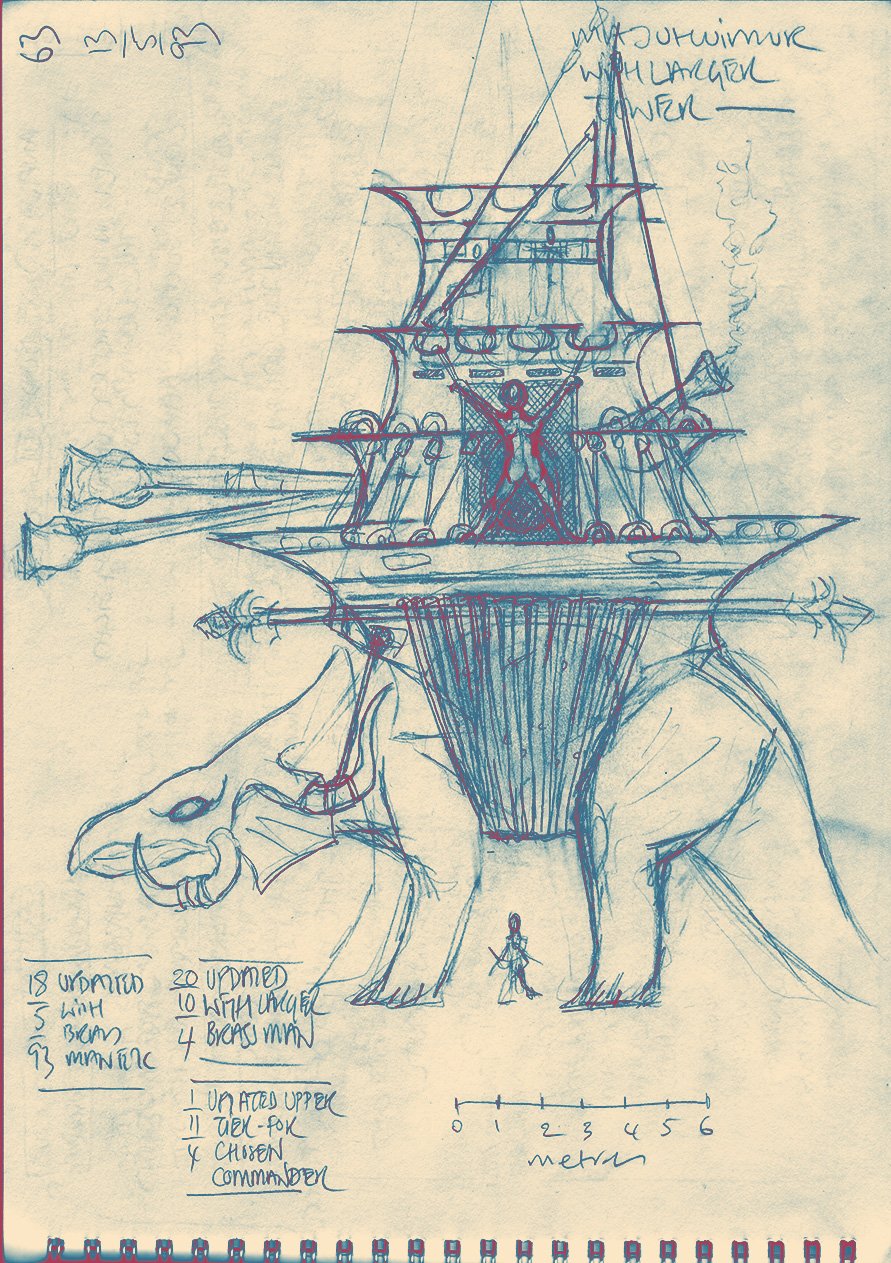Chapter: Dragons
Information relevant to the 3rd chapter of Dragon Fire
Akaisha’s Hearth
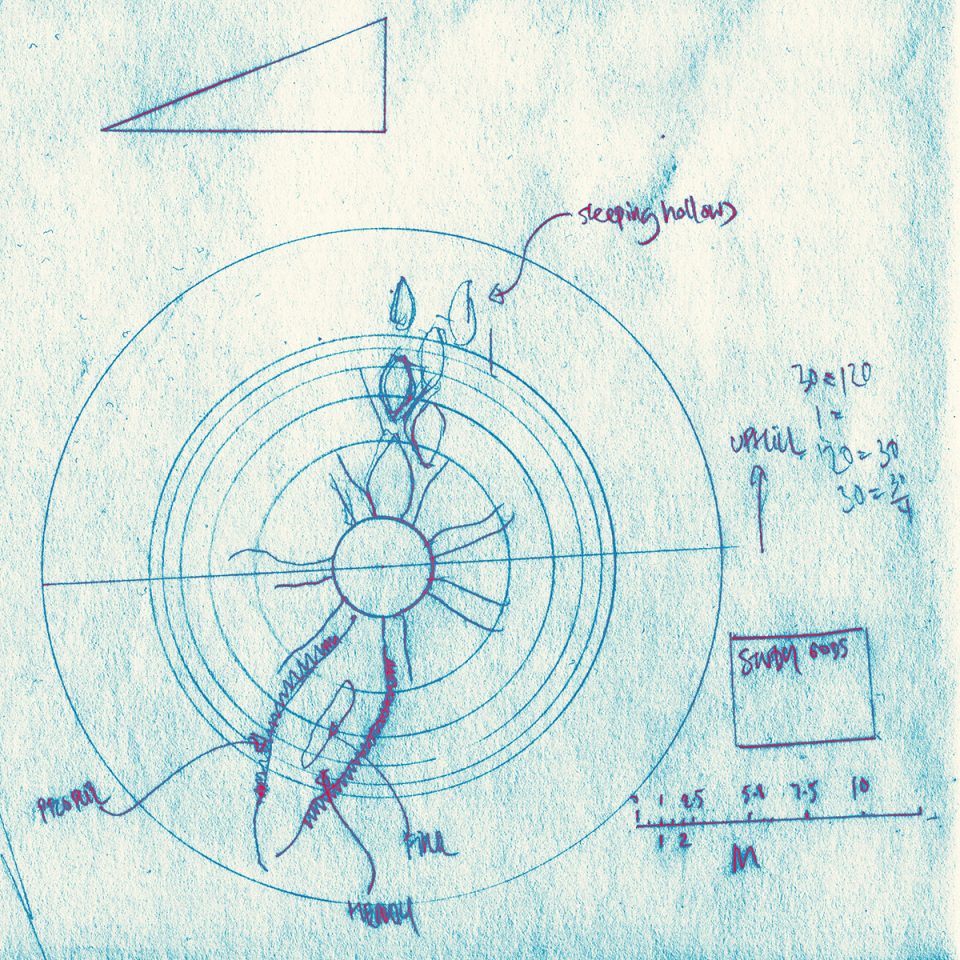
This is a rough sketch of the ‘rootearth’ of Akaisha’s mother tree; one of many in the Grove of the Ochre koppie. The circle at the centre is the trunk from which roots radiate. The outermost circle shows the extent of Akaisha’s rootearth. Uphill, between the roots, lie the hollows in which the members of her hearth sleep. Running down from the trunk is the major hollow, framed by two immense roots upon which the hearthmates sit when they take their meals together. Running down the centre of the hearth hollow is the fire to warm them and upon which they cook their food
the Crag and the Ancestor House
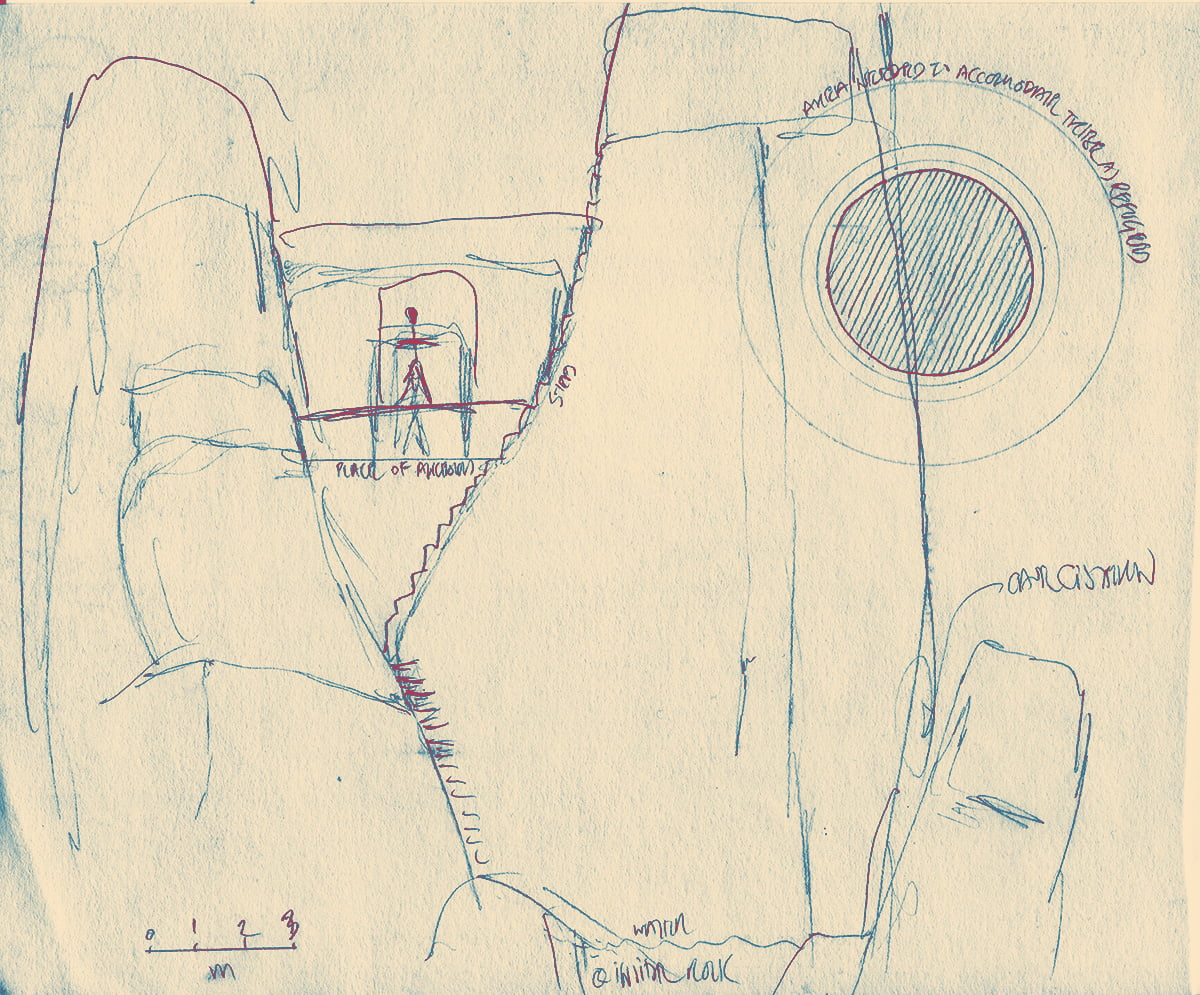
The first sketch shows the Crag—lying at the heart of the Grove—as it might appear to someone standing in the clearing below the Ancestor House
This was my original conception derived from the second diagram. As it came to be used in The Standing Dead, the scale should be perhaps a little larger… but not much. It should also be noted that I decided to move the cistern from where it is shown on the diagrams
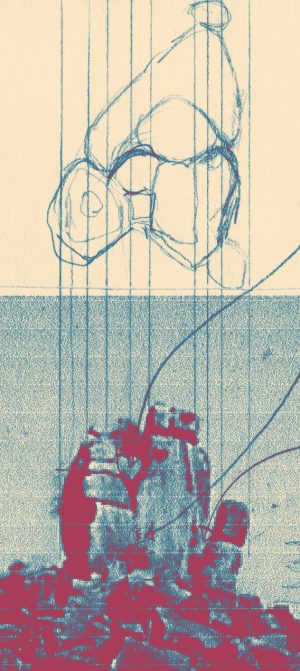
Steps cut into the rock climb to the Ancestor House, rising past it to the summit. It is on the summit, upon funerary trestles, that the Ochre expose their male dead for sky burial
Each koppie has an Ancestor House built somewhere up its crags—so that it is neither in the territory of the Earth Mother nor of the Sky Father. This chamber is completely lined with a mosaic of the skeletal remains of a tribes’ dead. The floor is covered with the pelvic bones and the lower walls with the skulls of dead women. The ceiling is covered with the arm and leg bones and the upper walls by the skulls of dead men. Between them is a frieze composed entirely of the skulls of children
The bones that line it produce a screen that intensifies an Ancestor House’s connection with earth and sky. Women walk barefoot on this, with their heads covered. Men walk shod until they reach their chairs—built on a base of children’s skulls, with men’s bones for seats and with long backs reaching up to the ceiling
as imagined by Mark Harrison
This is the cover by Mark Harrison for the US First Edition of The Standing Dead (that has become the two volumes of the Second Edition, The Standing Dead and The Darkness Under The Trees). It shows his imagining of the Crag and Ancestor House of the Ochre. Note his take on the funerary trestles upon which the male dead are exposed for sky-burial
the Grove
The Grove is the collection of cedars, or mother trees, covering the slopes of the hill that rises at the centre of the Koppie. All the koppies of the Plainsmen are built around such a hill, and the grove of the Ochre is typical
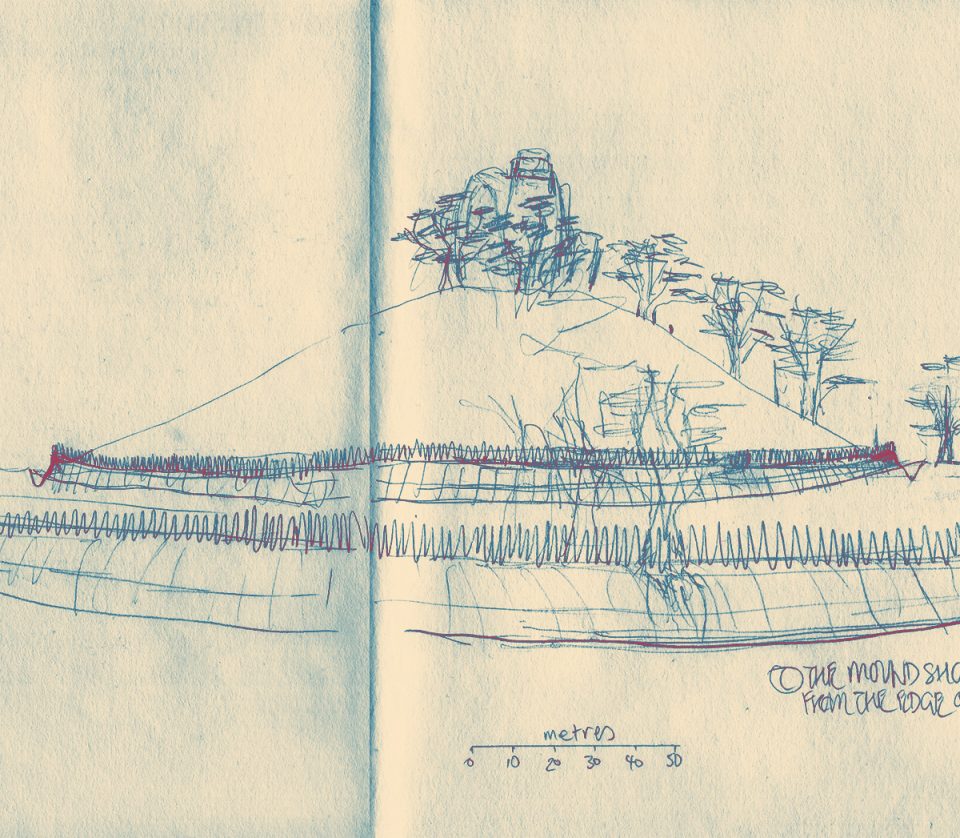
The first diagram is a rough sketch showing this mound, surrounded by the Homeditch (only a few of the cedars are shown). At the very summit of the hill, at the heart of the Grove, is the Crag—rocks that rise above the cedars among which is built the Ancestor House of the Ochre, and upon the summit of which they expose their dead
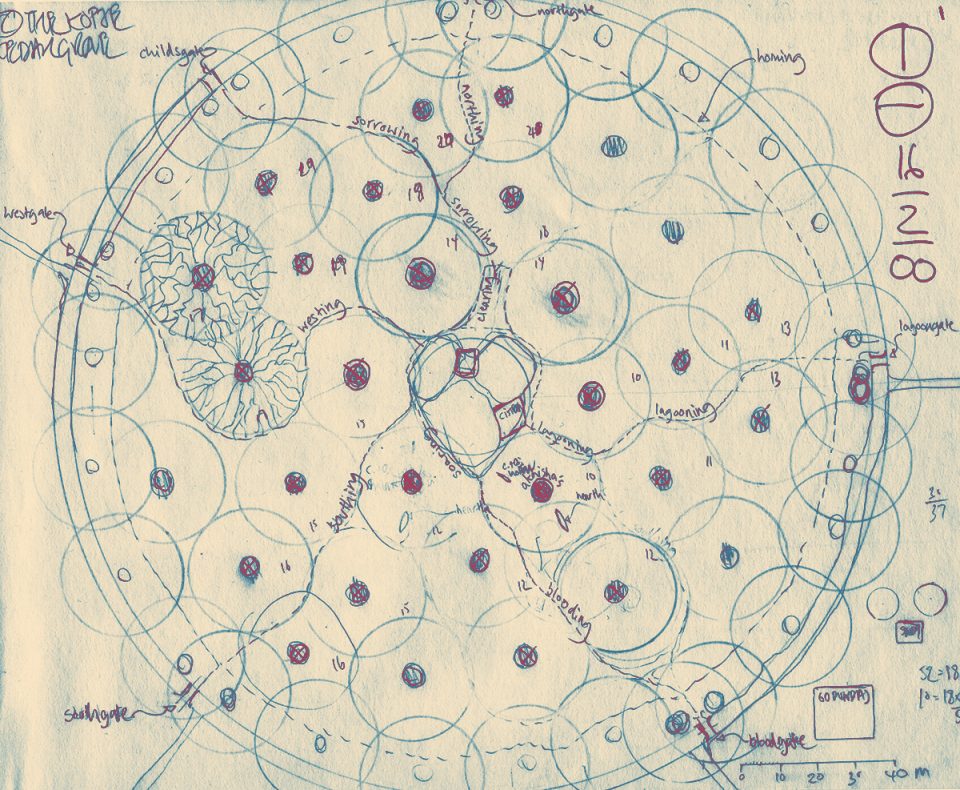
The second diagram shows the original map of the Grove that I used throughout the writing of The Standing Dead. (To read the labels, it might be easier to refer to Neil Gower’s version.) The small dark circles indicate the trunks of individual cedars. Those with crosses are trees belonging to a ‘hearth’. The larger circles give an indication of how far the branches of each tree extend and thus the extent of each hearth’s ‘rootearth’ or territory.
Note how more densely packed are the cedars around the Homeditch—this is so that their roots will reinforce the walls of the ditch. Also of note are the various ‘rootstairs’ that wind down the slopes, along the edges of the various rootearths, to the gates and earthbridges that cross the Homeditch to the ferngardens
At the centre of the Grove are located the three immense boulders that together form the Crag. The square nestling between two of them, to the north, is the Ancestor House. The other square to the east is the cistern. Touching this, to the south-east, is the rootearth of Akaisha’s hearth
The third diagram is a detail from the Grove map. I have included this so that it is easier to see the Crag and Akaisha’s mother tree in particular. Both the actual hearth and the hollow where Carnelian and Osidian sleep are marked
Note also the clearing that the Ancestor House looks down into
the Koppie
The first sketch shows, roughly, what you would see if you were standing on the edge of the Outditch. The inner ferngardens lead to the Homeditch, that is like a moat for the hill that rises to the Crag. It is upon this hill, the Grove, that the mother trees grow—cedars that are sacred to the Plainsmen. Only a few of these trees are shown—there should be enough to cover the whole hill. The other line of trees are the magnolias lining the Lagooning
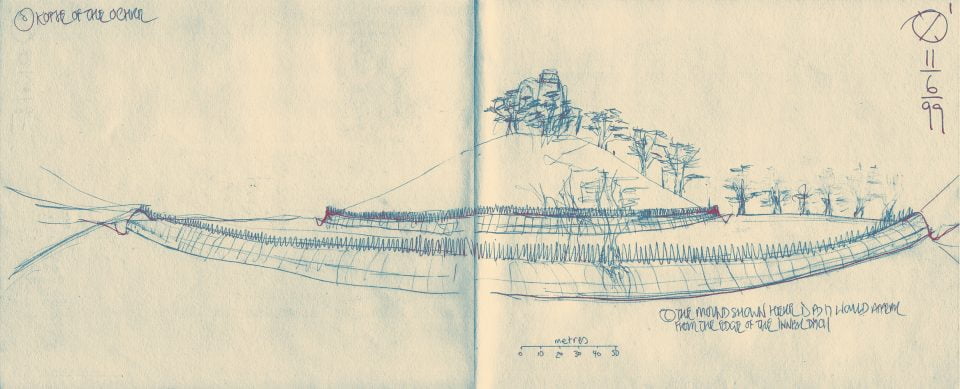
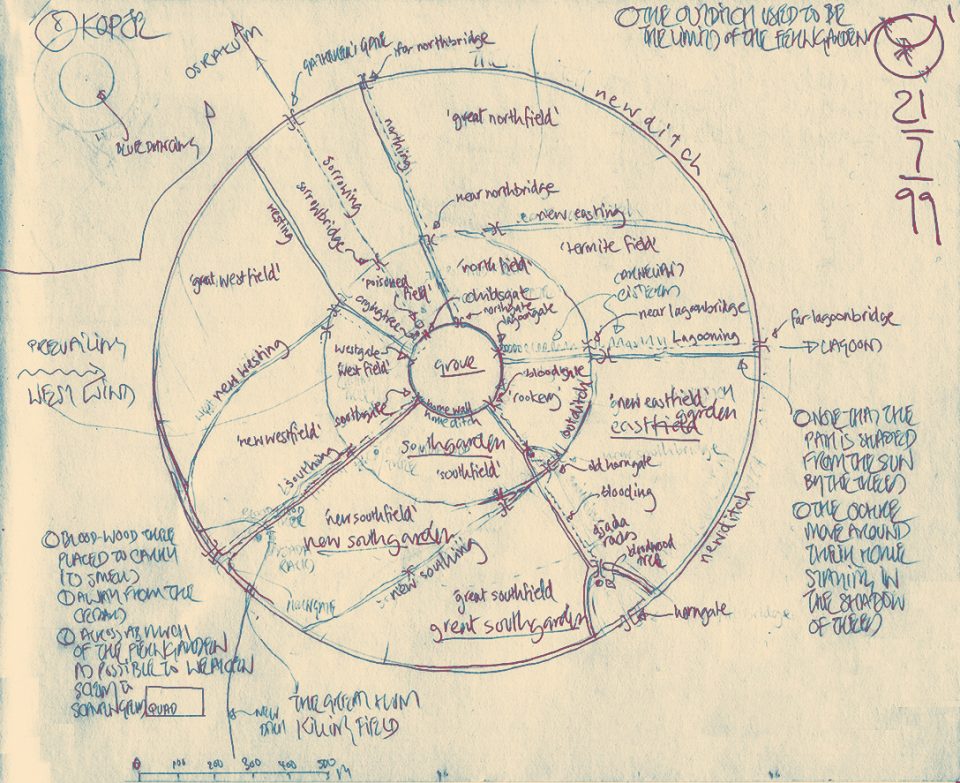
The second diagram shows the original map of the Koppie that I refined throughout the writing of The Standing Dead. Neil Gower worked from this to produce his version for publication.
In the bottom left you will see the faint remnants of the bloodwood tree and the killing field, showing their original position. This was changed once I better understood that the direction of the prevailing wind was an easterly. The location of the field in which the Ochre slaughter earthers has been chosen so that the scent of blood travels as far as it can before reaching the open fernland where it might attract the unwanted attention of raveners
Mother Trees
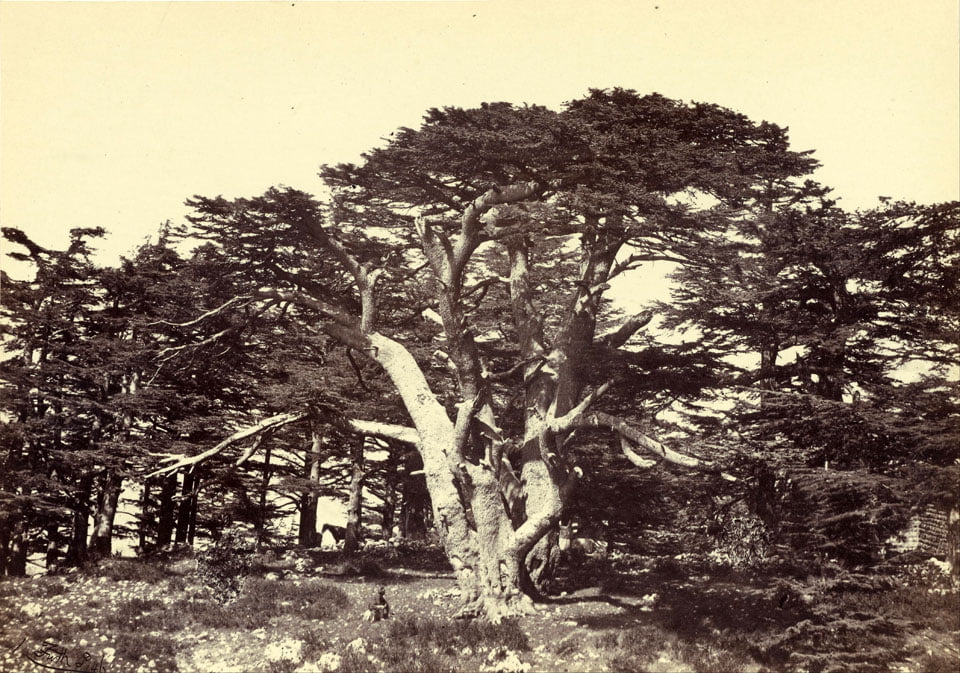
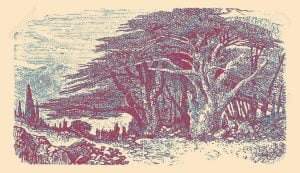
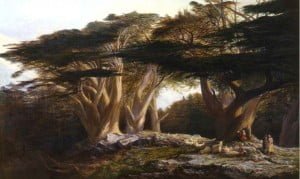
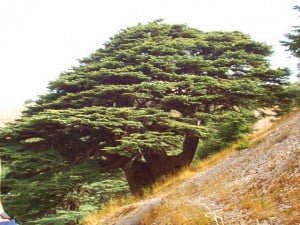
Mother Trees are a species of cedar. I took the second photograph, one summer, of a beautiful example located in the Edinburgh Royal Botanic Gardens. I spent much time lying under it, looking up through its branches at the sky. Tragically, it was damaged in a storm and had to be cut down. The specimen shown is a small one. On the slopes of Lebanon, famed since ancient time for these trees, some exist that are hundreds of years old and that reach a height of 18m (54ft), an expanse of 32m (100ft), and whose trunks are 4m (12ft) in diameter
the neighbourhood of the Koppie
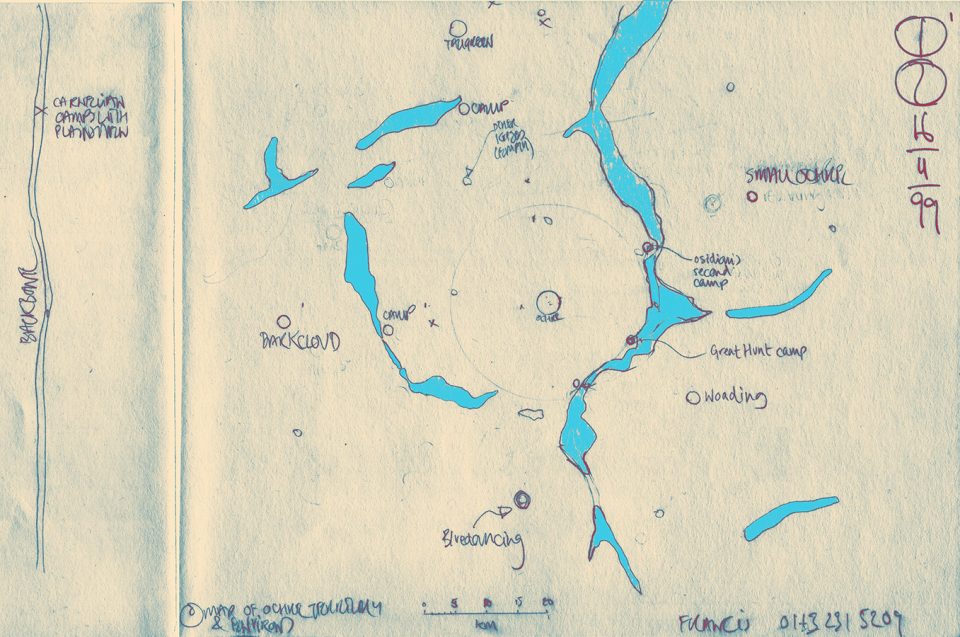
This is a map showing the area around the Koppie of the Ochre—the circle at the centre of the drawing. Note the relationship between the Koppie and the Backbone that runs up the left hand side. The irregular shapes show the positions of the various seasonal lagoons. Also shown are the positions of neighbouring koppies of other Plainsman tribes

